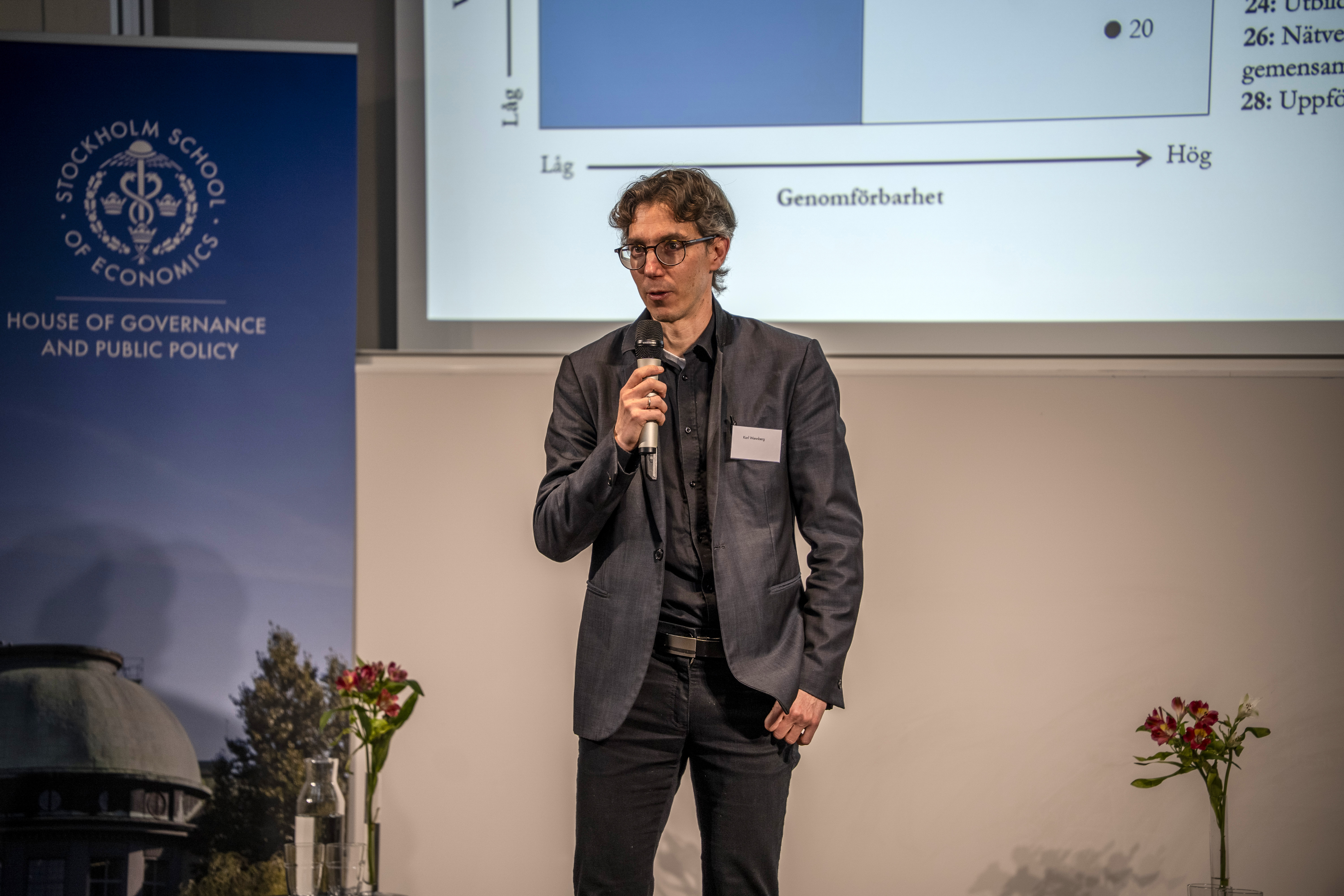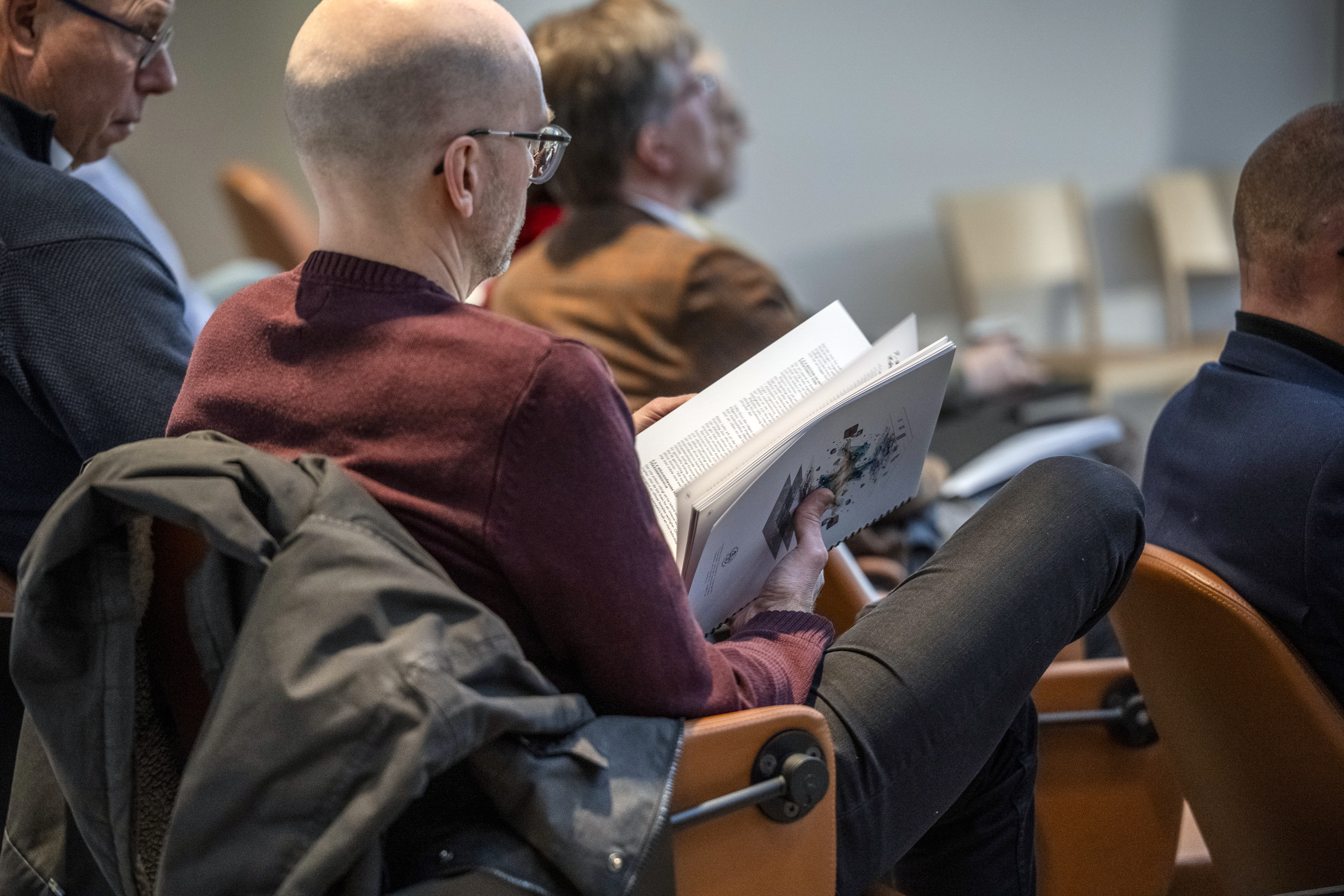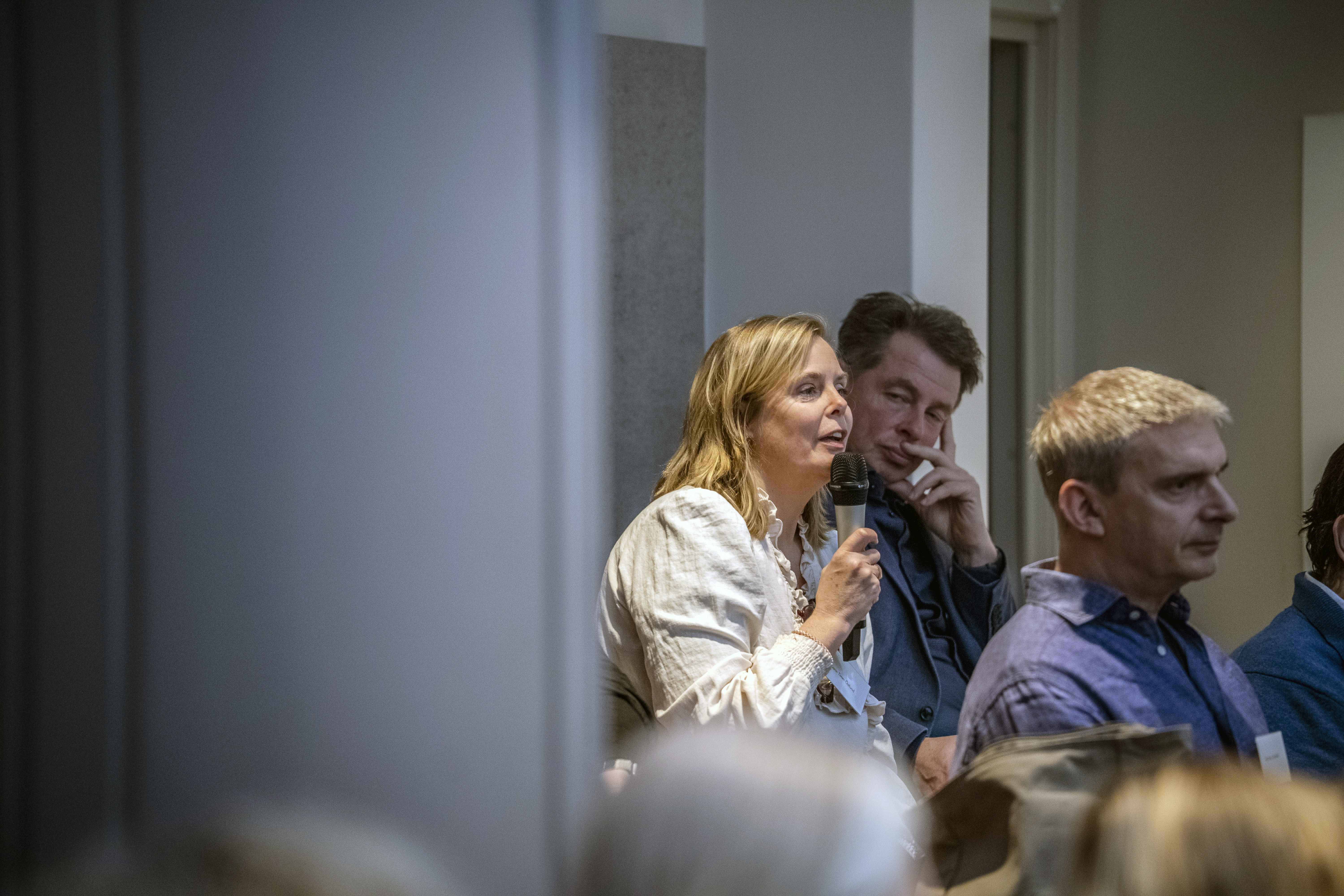Building public sector capacity: From fragmentation to system shift
The symposium brought together researchers, policymakers and practitioners to discuss how Sweden's public sector can strengthen its ability to drive innovation across organisational and sectoral boundaries.
The event marked the conclusion of a year-long pre-study led by Professor Karl Wennberg (Scientific Director at the House of Governance and Public Policy) and coordinated by Gabriel Karlberg. The project was a collaboration between the Stockholm School of Economics, Mid Sweden University and Södertörn University, and was carried out within the framework of SustainGov, an initiative funded by Vinnova, the Swedish Energy Agency and Formas.

Gabriel Karlberg and Karl Wennberg, authors of the report. Photo: Johanna Ståhlberg
"We're seeing great ambition - what's missing is alignment"
In his opening remarks, Karl Wennberg stressed that while there is no lack of ambition in the public sector, many reform efforts remain isolated. “The challenge,” he noted, “isn’t about individual competence or ideas. It’s about how to align leadership, resources and structures across systems that weren’t designed for cross-sectoral collaboration.”
Together with project coordinator Gabriel Karlberg, he presented ten priority actions identified through the study. These include establishing national learning systems, improving public procurement for innovation, and creating talent pools to support small municipalities.

Professor Karl Wennberg, Scientific Director at the House of Governance and Public Policy. Photo: Johanna Ståhlberg
Keynote: Håkan Sörman on structural readiness
In his keynote, Håkan Sörman, former CEO of SKR (Swedish Association of Local Authorities and Regions), offered a candid reflection on what it takes to drive innovation in the public sector. His message: structural readiness matters as much as creative ideas. Without clear mandates and coordinated governance, even the best initiatives struggle to scale.

Håkan Sörman delivering his keynote. Photo: Johanna Ståhlberg
Panel discussion: Bridging vision and practice
Moderated by Karl Wennberg, the panel brought together cross-sectoral expertise:
- Hanna Regnér, COO at Inkludera and SSE alumna, emphasised the importance of building long-term partnerships between municipalities and social innovations.
- Dr Kristy Delisle Milton, senior advisor at Gullers Grupp and an expert on public governance, highlighted the need for governance models that bridge strategic vision with day-to-day operations.
- Håkan Sörman added that incentives and structures must change to support cooperation across organisational boundaries.
Their shared message: for Sweden to meet future challenges, it needs more than good projects - it needs a more integrated approach to innovation and capacity-building.

The panel, moderated by Karl and Gabriel. Photo: Johanna Ståhlberg
Key takeaways from the pre-study
The study’s findings offer a sobering but constructive picture:
- Fragmentation is a major barrier: Vision, governance, and training efforts often lack coordination.
- Training supply is scattered: Many public sector organisations struggle to find relevant, high-quality professional development.
- Follow-up is weak: Capacity-building efforts are rarely evaluated for effectiveness.
- Upscaling is rare: Promising pilots often fail to become embedded in wider systems.
- There's a will - but not always a way: Particularly in smaller municipalities, lack of resources and practical support hampers progress.
Among the 30 recommendations, the report highlights ten with strong potential for both feasibility and societal value. These include:
- A national peer-review system for public organisations
- Strengthened collaboration between academia, vocational training and employers
- Network-based learning and shared platforms
- Strategic use of procurement to enable innovation
- More structured support for follow-up and impact evaluation

The report is available both as a printed version, as well as a PDF to download. Photo: Johanna Ståhlberg
From insight to action
As the event wrapped up, participants shared reflections on what's needed next. Many pointed to the importance of national coordination, shared learning environments, and long-term investment in leadership capacity.
The message from the room was clear: system innovation in the public sector isn't just about changing tools, it's about changing how we work together.
This symposium marks the start of an ongoing dialogue. Follow GaPP and SustainGov to stay informed on upcoming activities and research.

The audience contributed with some insightful questions and comments. Photo: Johanna Ståhlberg

The afternoon emded with a mingle. Photo: Johanna Ståhlberg




